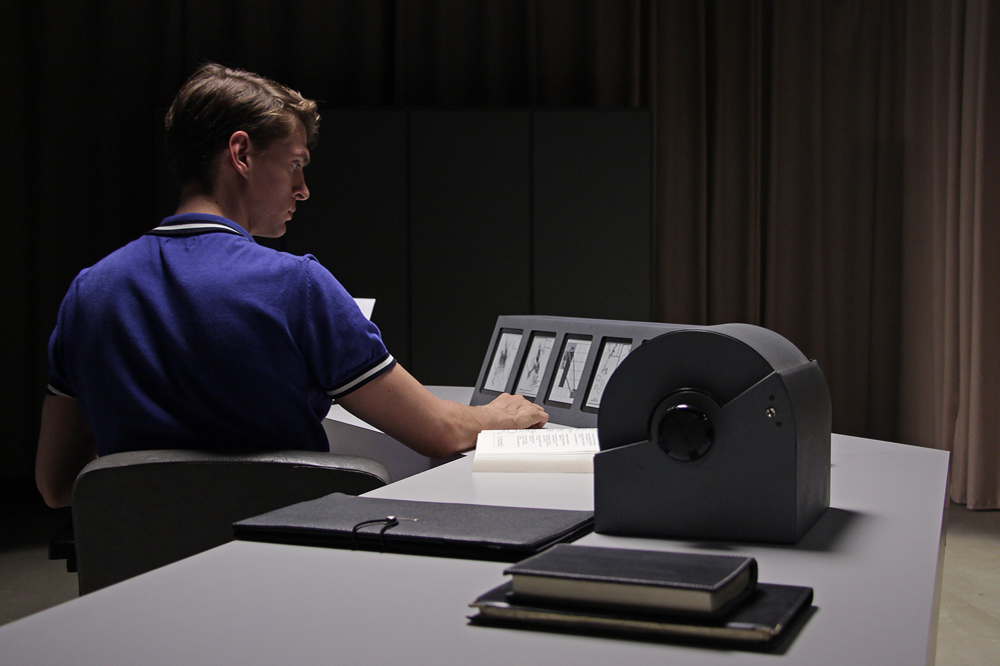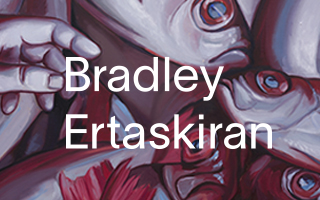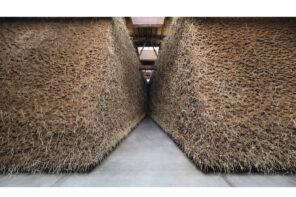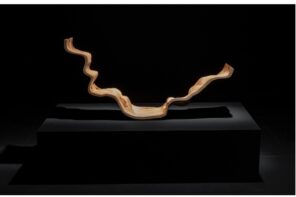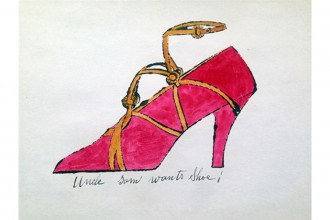Someone once told me that humans are evolving more flexible thumbs due to our growing propensity for text messaging. I know that this is not how evolution works. And yet, amid a gathering of people at least a few decades my senior, I did demonstrate the most flexible pair of digits – my second thumb joints bending to a far more acute angle than those of my companions. This may have been mere coincidence. Or perhaps frequent and consistent use had increased my thumbs’ range of motion, as exercising any part of the body tends to do (in a way that would not, of course, be passed on to hypothetical progeny).
Julien Prévieux’s The Elements of Influence (and a Ghost), currently showing at the University of Toronto’s Blackwood Gallery, choreographs the ways in which advancing technologies imagine, affect, and control our bodies. Here, the dialogues between body and technology that are so woven through contemporary life are dissociated from their quotidian registers, and appropriated to “explore their potential as artistic forms,” as Prévieux explains in his essay “The New Graphic Method.” We encounter these interactions in new sequences, in relief against gallery walls or a grid-like performance space. And while the works seek to open up formal possibilities through these novel arrangements, they also function to interrogate emerging facilities and dexterities latent in our everyday relationships with objects.

Julien Prévieux, “What Shall We Do Next? (Sequence #3),” 2017. Performance. Innovation Complex, University of Toronto Mississauga. Performers: Allie Hankins, Syreeta Hector, Bee Pallomina, Kaitlin Standeven. Photo by Henry Chan.

Julien Prévieux, “What Shall We Do Next? (Sequence #3),” 2017. Performance. Innovation Complex, University of Toronto Mississauga. Performers: Allie Hankins, Syreeta Hector, Bee Pallomina, Kaitlin Standeven. Photo by Henry Chan.
Prévieux’s exhibit not only distances its source materials from their daily contexts, freeing them “from their practical function through choreographic abstraction,” it simultaneously liberates them from their silence. Extensive narration animates the video works Patterns of Life (2015) and What Shall We Do Next? (Sequence #2) (2014), as performing bodies and recorded voices provide historical accounts and thematic explanations. In the live opening-night performance of What Shall We Do Next? (Sequence #3) (2017), one dancer notes that, in her will, Martha Graham left the “residue” of her dance works to Ron Protas. This language, seductively poetic and infuriatingly vague, elicits convivial titters from the audience.
Amid hefty didacticism, gestures usually characterized by speed and an almost-second-nature ease – like sliding a finger to unlock a smartphone – become verbose, weighed down by the time it takes to recount their backstories. Prévieux’s works, then, create a sort of friction, subverting the usual smoothness and efficiency of interface design and digital technologies. This principle subtends a series of hand-drawn crime maps, created with police officers from the 14th district of Paris. For the project, Prévieux hosted a series of workshops between 2011 and 2015, teaching cops to draw by hand the “crime maps and visualization diagrams” that are typically generated by computers. The process extended the officers’ relationship to their renderings through time and effort, while thwarting their usefulness as “decision-making tools,” since “the results would always be finished too late.”

Julien Prévieux, “Elements of Influence (Modulation),” 2017, Blackwood Gallery. Photo by Toni Hafkenscheid.
In the example of crime-mapping tools, the disciplinary nature of technology takes on a very literal form. And yet, each of the technologies Prévieux addresses propose their own disciplining processes, making demands that lead our bodies, through time and practice, to become particularly adept at moving in specific ways, to specific ends. Fast-typing postures, screen-accustomed eyes, and – indeed – flexible thumbs: our bodies strive toward virtuosic interactions with the varied interfaces and tools that surround us.
There is an analogue, here, to the demands dance can make on performing bodies, emphasized by the tendency, throughout Prévieux’s exhibited pieces, to feature highly-trained performers. For Patterns of Life, Prévieux worked with five dancers from the Opéra de Paris, an internationally-renowned company, and the performers in both iterations of What Shall We Do Next move with the practiced precision of many years’ training. (Sequence #2) begins with close-ups of dancers’ hands meticulously executing pinching, dragging, and swiping motions. Placing these gestures within the context of a choreographic score, the work illuminates the quiet skill and technique present in how we operate technology. Here, the virtuosic dancer and the virtuosic texter meet.
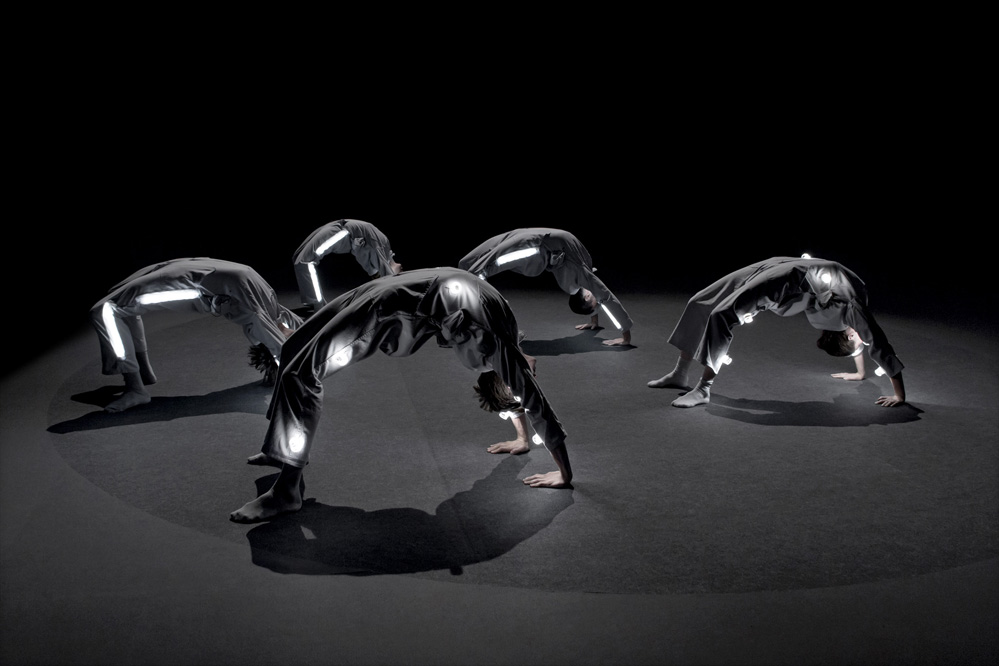
Julien Prévieux, “Patterns of Life,” production still, 2015. Courtesy the artist and Galerie Jousse Entreprise, Paris.
Importantly, both these figures move within wider frameworks. To be a highly proficient user of technology today implies being an adept participant in the technologically networked economies and socialites of late capitalism. As Nicole M. Aschoff writes about smartphones in Jacobin, “Neoliberal demands for flexible, mobile, networked workers make them essential.”
In the case of dancers like those from the Opéra de Paris, the form of proficiency at play is easily recognizable. Yet, as many critics and scholars have observed, virtuosity is not so stable a thing. As Judith Hamera writes, it “is not a state or a quality of individual bodies.” Rather, it might more accurately be understood as “a look rebounding between two differently framed bodies” loaded with the assumptions, expectations, and fantasies we project “onto the screen of the exceptional performer.” Following this logic, prodigiousness resides not solely in the high extension of a leg, or in especially consistent gracefulness: it emerges in and through the activity of spectatorship. The dancers of the Opéra de Paris in Patterns of Life are rendered virtuosic not merely by their movement qualities, but also by the viewer’s invested encounter with them.
Virtuosity, then, inevitably returns us to its audience – a fixation of Prévieux’s exhibit. Shown some distance from the rest of the work, Elements of Influence (Modulation) (2017) makes this focus especially explicit. As the exhibition notes recount,
In preparation for his exhibition […] Prévieux organized a workshop with a group of students, staff, faculty, researchers, campus police, and employees of the administration at the University of Toronto Mississauga. Using an infrared camera, he recorded the movements of participants’ pupils while they were looking at his work in the Blackwood Gallery. Eye-tracking software was then used to produce diagrams that visualize the eye movements across the exhibition, with the final sketches reproduced in wool on the walls of the e|gallery.
In addition to engaging and monitoring the gaze of the gallery’s local community, and using the collected information to create visual forms, this installation materializes the relationship between the artwork and the viewer. It reminds us of Hamera’s generative feedback loop, positioning the artist’s work itself an exceptional entity, which bears the projections and fascinations of differently interested viewers.
Prévieux layers disparate notions of embodied discipline and virtuosic movement with the shifting contexts of viewership that inform them. He not only brings overlooked moments of technical skill to the fore, but also begins to parse the systems of power that surround them. An iPhone and an audience each demand technical proficiency – as do techno-capitalism and art markets. Perhaps we might imagine these structures as the Elements of Influence to which Prévieux’s title refers. Even as the exhibit moves toward abstraction, it continues to engage with the inscription of such production and consumption networks in the catalogues of our physical expertise.
Speaking of power: Prévieux’s installation Forget the Money (2011 and 2017) cheekily displays the titles that once comprised Bernard Madoff’s library, thick with ironic humour (my favorite: Martha Stewart’s Just Desserts). Embracing similar moments of levity, the audience broke into laughter at numerous points throughout the performance of What Shall We Do Next (Sequence #3). It seems that motion commands, and patented gestures generate not only graphic, but also comedic possibilities when addressed choreographically. And perhaps these lighthearted cracks signal further openings for intervention in the systems through which we move daily: new forms of friction to weigh down, if momentarily, meanings that often slip by amid the seemingly expert and effortless.

